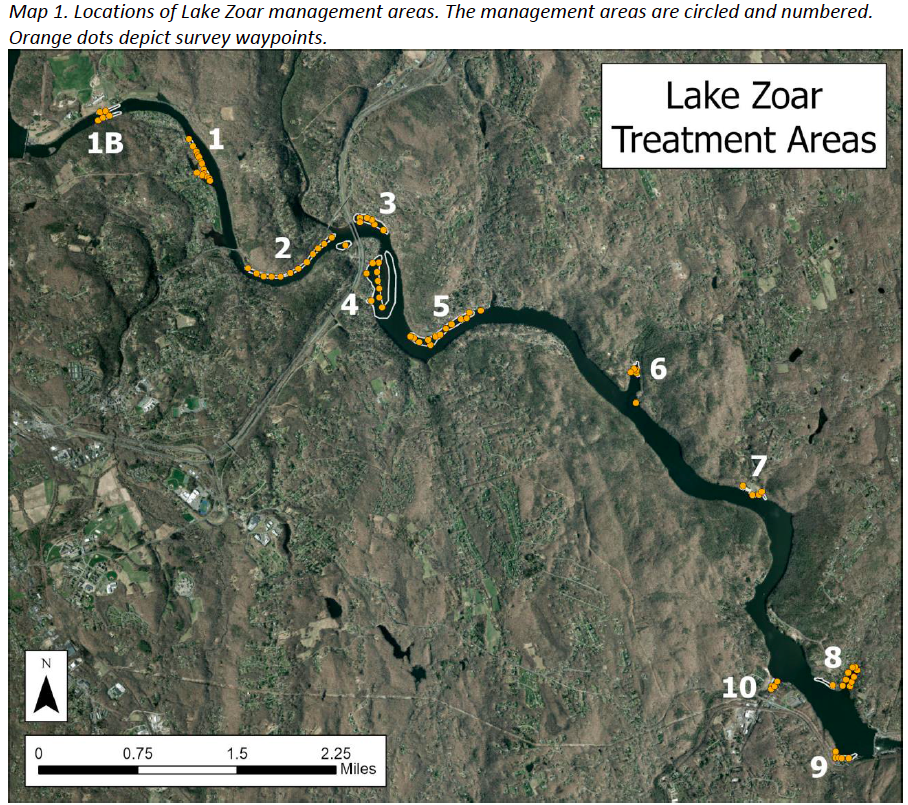Prepared by Northeast Aquatic Research, 74 Higgins Highway, Mansfield Center, CT 06250
December 21, 2021

Summary
Invasive aquatic plants in designated management areas in Lake Zoar were treated with the herbicide Tribune (diquat) on August 4th, 2021. Approximately 80 acres of invasive Eurasian milfoil (Myriophyllum spicatum) and Curly-leaf pondweed (Potamogeton crispus) were targeted. The invasive species Brittle naiad (Najas minor) is also present in Lake Zoar, though it was not listed as a target species on the 2021 treatment permit. Northeast Aquatic Research (NEAR) conducted two surveys of the management areas; a pre-treatment survey on May 17th, and a post-treatment survey on September 29th, 2021. The application of herbicide was originally scheduled for late June but was repeatedly rescheduled in June and July due to high flushing rate of water through the lake, causing the utility to lower the lake level significantly due to impending storm water.
2021 General Results
Eurasian milfoil, Brittle naiad, and Curly-leaf pondweed were the only invasive species found in Lake Zoar during the 2021 surveys. No water chestnut was found despite its proliferation in upstream Lake Lillinonah. Overall results of treatment of the three target invasive species in each management area is given in Table 2.
Eurasian milfoil was abundant in six of the management area in May. Milfoil was reduced in abundance or gone completely in 6 of the areas (1B, 2, 3, 5, 6, and 7). Two areas (1 and 9) had unchanged abundance, and the three areas where milfoil was not present in May had scattered new growth in September.
Brittle naiad was not found in any of the management areas in May. In September, it was found only in Management Area 2 at sparse density.
Curly-leaf pondweed was the most abundant invasive species in May, occurring at 50-100% surface coverage in 8 of the 11 management areas. Curly-leaf pondweed was not found in any of the management areas in September.
To read the full report, click here
